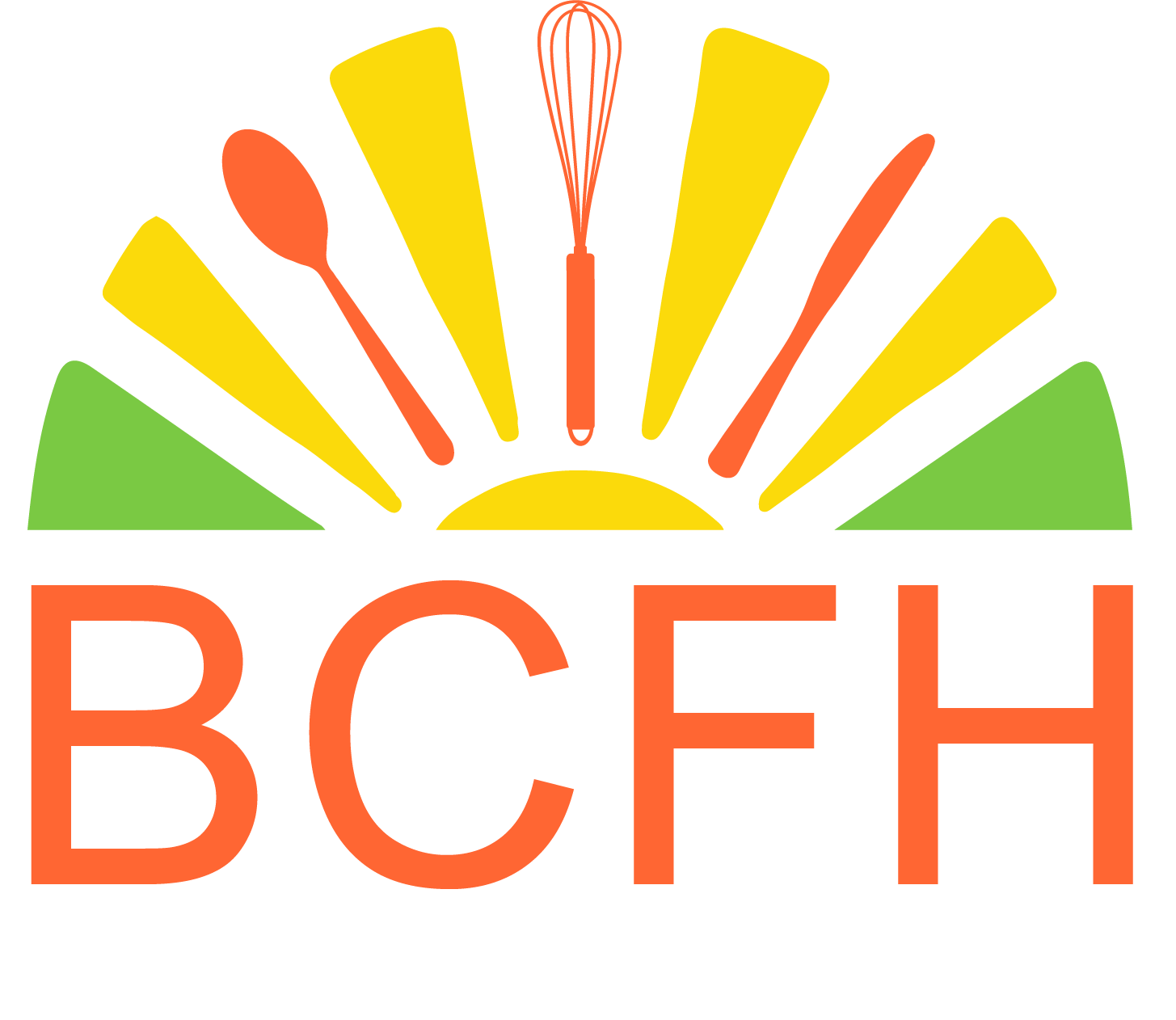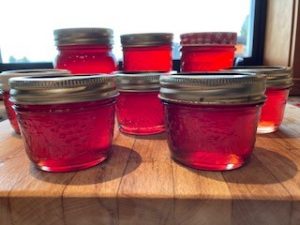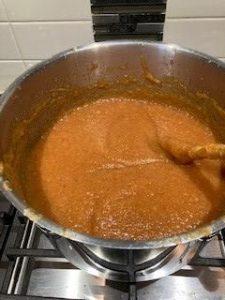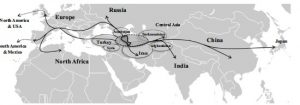Quince
Do you have any of these in your neighbourhood?
At first glance you might think apple? Or pear? Both answers would put you in the right direction because they belong to the same family, Rosaceae Maloideae. But these are quince. The difference lies in Genus: apple trees are Malus and pear trees are Pyrus, whereas quince tree is Cydonia.[i] They are very hard, dry and too astringent to eat raw. However they give off a wonderful fruity, floral fragrance and are delicious when cooked.
I was familiar with the flowering quince, botanical name Chaenomeles, often used in landscaping (which also produces a smaller fruit although the flavour of the fruit is nowhere near as rich and aromatic as that of the true quince)[ii]. But, I had never seen a real quince tree and didn’t realize that they could be grown in British Columbia. They have grown in the temperate parts of BC since at least the 1890’s[iii] although they could have been here before that. There are records of quince in the United State in the 1600’s.[iv]At least two varieties are acclimatized to our winters ‘Le Bourgeot’ and ‘The Champion.’[v]
I was introduced to quince recently at a preservation workshop put on by Lifecycles (see https://lifecyclesproject.ca/) and PreserveSafe (see https://preservesafe.thinkific.com/) in Victoria. We used the quince to make jelly. I was lucky enough to bring some quince home to make some more and to try making quince paste.
At the workshop we experimented with the quince jelly. After washing to remove the fuzz, we removed the stems and bloom ends, then cut them in to small pieces and covered them with water and boiled for approximately 25 minutes before putting into a jelly bag to drain the juice for jelly making. We tried various recipes using full sugar and reduced sugar or honey, using commercial varieties of pectin or no added pectin. In our taste test everyone found the full sugar, no added pectin (the way our grandmothers and great grand mother made jams and jelly) had the best colour (a rich jewel tone versus a yellow/pink) and flavor (stronger, aromatic). So that was what I made with the ones I brought home.
Quince Jelly
After preparing the quince juice, I used this recipe: ( yields four 250 mL jars)
3 ¾ cups (930 ml) quince juice
3 cups (75ml) sugar
¼ cup (60 ml) lemon juice
Put all ingredients into deep pot or kettle. Mix well. Bring to a boil and keep boiling until it reaches 220°F (104°C), 8°F above the boiling point of water or until it sheets from a spoon or if a teaspoonful placed on a cold plate holds its shape and will wrinkle if pushed with your forefinger. I used my old candy thermometer to test the temperature.
After skimming off the foam, I poured the hot jelly into hot, sterile jars, leaving ¼ inch headspace. Wiped rims added a new lid. Secured it with a ring. Then processed in a water bath canner for 5 minutes.
The longer cooking really brings out the colour. The color of cooked quinces is produced by the release of pigments called anthocyanins during the cooking process. This group of compounds are called anthocyanins, from the Greek “antho” meaning flower and “cyan” meaning blue. The anthocyanin in the quince is bound up in tannins, only released when cooked. Many of these compounds turn red in acidic environments (like lemon juice) and blue in alkaline. As well, the longer cooking caramelizes the sugar. Quince fruits produce a natural pectin when cooked making it ideal for making jams, jellies, and sweet pastes such as membrillo.[vi]
Quince Paste (Membrillo)
Membrillo is a sweet, thick, sliceable firm paste made from quince that originated in Spain and is especially popular during the Christmas holidays. It is now a popular confection in many countries. It’s also known as Dulce de membrillo (Spain, Ecuador, Argentina, Chile, Mexico, Uruguay), marmelada (Portugal, Brazil), pâte de coing (France), Quittenkäse (Germany), birsalmasajt (Hungary), and quince cheese (New England) or quince paste (UK, Canada, Australia)[vii].
I put the pulp from the jelly bag through a food press (https://bcfoodhistory.ca/applesauce-wear-ever-way/) and used the puree to make quince paste (Membrillo).
Into a large pot or kettle, I measured the puree and added an equal amount of sugar and for every 4 cups of puree I added ¼ c. (50 ml) lemon juice. [you can flavor it with Vanilla bean, Star Anise & Cardamom, but I just left it plain].
I heated at medium until the sugar was dissolved and then cooked over low heat until it was thick and a dark orange pink colour (1-2 hours).
 Then I poured it into a baking pan lined with lightly greased parchment paper, and put it in a very low oven (125°F.) to dry. You could use a dehydrator if I you have one. This can take one hour or more.
Then I poured it into a baking pan lined with lightly greased parchment paper, and put it in a very low oven (125°F.) to dry. You could use a dehydrator if I you have one. This can take one hour or more.
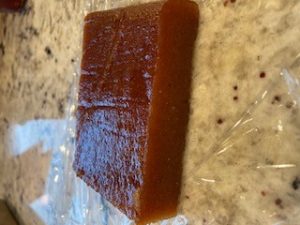 Once the paste was dry I cut it into squares, wrapped each in plastic wrap and stored in the refrigerator. It can be stored for 3 months in the refrigerator and may be frozen for a longer period. Quince paste is often cut into small slices and served with a slice of cheese. It is very popular for chacuterie boards.
Once the paste was dry I cut it into squares, wrapped each in plastic wrap and stored in the refrigerator. It can be stored for 3 months in the refrigerator and may be frozen for a longer period. Quince paste is often cut into small slices and served with a slice of cheese. It is very popular for chacuterie boards.
History of Quince
Source: Abdollahi, H. (2019, p. 1043).
The quince tree is an ancient plant. First attempts for domestication of this species probably were made in the Mesopotamia between 5000 and 4000 BC. The evidence shows that over the course of 4500 years, the quince tree has been spread from its center of origin in the Trans-Caucasia and north of Iran to the westernmost parts of the world in the Americas.[viii]
There are many stories, legends and mythology associated with quince. For example, some speculate that the Adam’s apple is the quince bite he choked on. Another legend is that a quince and not an apple was at the center of discord connected to the backstory of the Trojan war, and the apple favored by Aphdrodite was really quince.[ix]
Perhaps the mystique has been created because is it hard to believe how something so ugly (fuzzy, lumpy, pale yellow, mottled skin, hard, sour, tannic astringent) can be magically transformed into something so beautiful in taste and colour.
[i] https://www.bcliving.ca/quince-the-fruit-of-love
[ii] https://depts.washington.edu/hortlib/resources/wp-ganrecord.php?palid=668
[iii] https://www.bcfga.com/224/1890s
[iv] https://vegparadise.com/highestperch51.html
[v] Stewardship Pilot Program City of Victoria https://www.victoria.ca/; https://www.bcliving.ca/quince-the-fruit-of-love
[vi] https://www.kitchenchemology.com/recipes/quince-paste-red
[vii] https://www.daringgourmet.com/membrillo-quince-paste/
[viii] Abdollahi, H. (2019). A review on history, domestication and germplasm collections of quince (Cydonia oblonga Mill.) in the World. Genetic Resources and Crop Evolution, 66(5), 1041-1058.
[ix] Polizzi, D. (2020, Sept. 14). It wasn’t an apple: Tales, traditions and legends. Wall Street International Magazine https://wsimag.com/food-and-wine/63211-it-wasnt-an-apple
